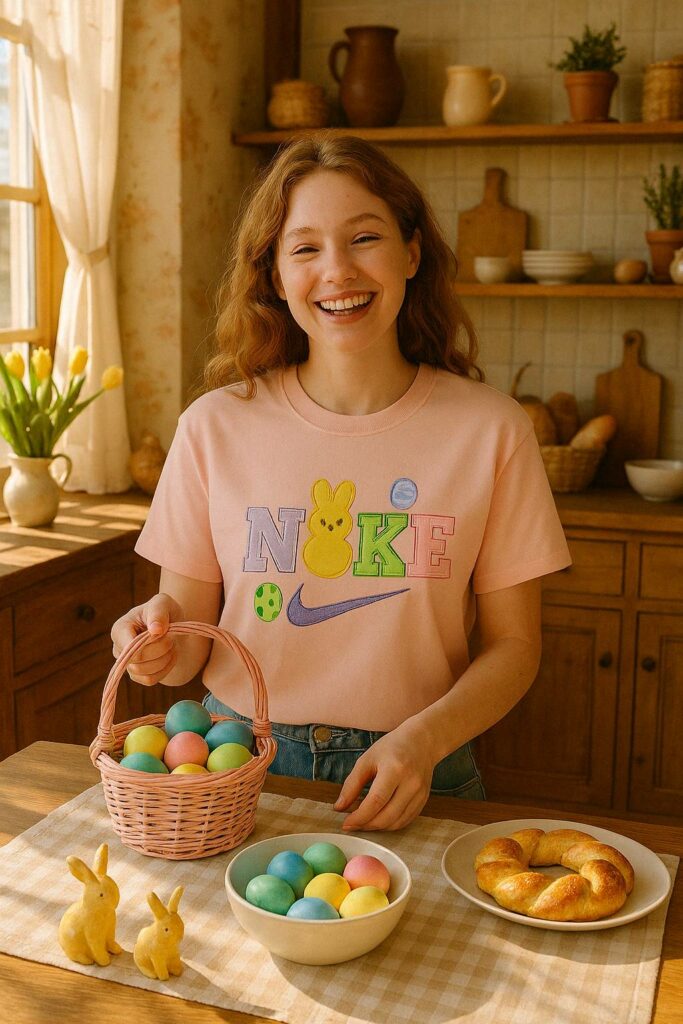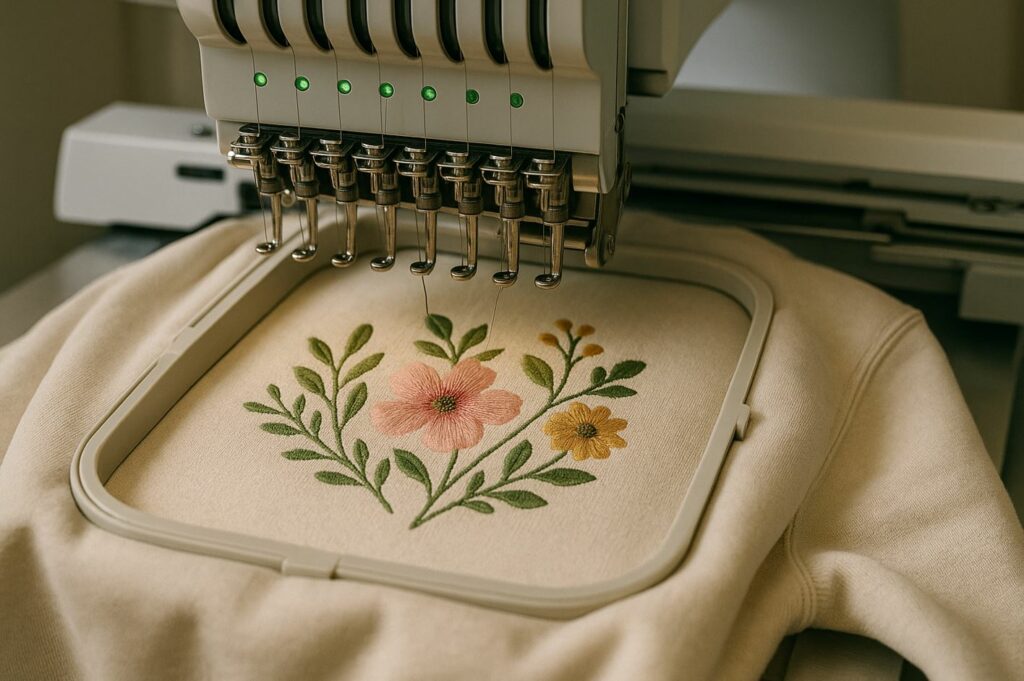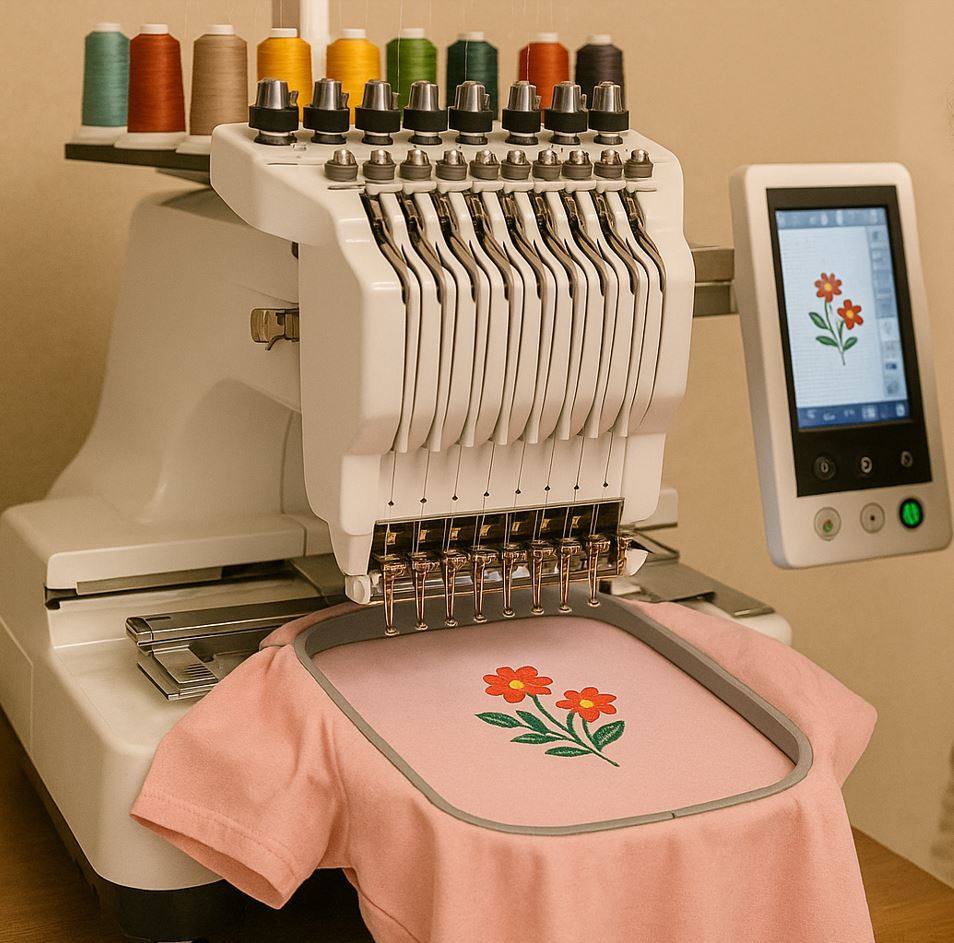Holiday Gifts
Why More People Are Choosing Embroidered Shirts Over Printed Ones
In recent years, a notable shift has occurred in the world of fashion and customization: more people are choosing embroidered shirts instead of printed ones. This change is not just a trend, but a reflection of evolving consumer values, aesthetic preferences, and expectations around quality. While printed shirts have long dominated the market due to their affordability and versatility, embroidered shirts are now standing out for their elegance, texture, durability, and emotional appeal. From corporate uniforms to personal fashion, embroidery is no longer a niche—it’s becoming a statement. Let’s explore the reasons behind this shift and why embroidered shirts are experiencing a modern renaissance.
The Appeal of Texture and Dimensionality
One of the most compelling reasons people are moving toward embroidery is the look and feel of the final product. Embroidery offers a texture and dimensionality that printing simply cannot replicate. A printed shirt, no matter how high the resolution, will always be flat. In contrast, embroidery introduces raised stitching that catches light, adds shadow, and feels tangible to the touch. This richness transforms a simple design into a piece of tactile art. Whether it’s a small monogram or a large company logo, embroidery instantly elevates the visual experience.
For many, this is not just about aesthetics but about substance. Embroidered designs feel more permanent and thoughtful. The density of thread and the care taken in stitching speak to a deeper level of craftsmanship than a surface print. Even casual wear, when embroidered, takes on a more refined, stylish presence.

A Shift Toward Quality Over Quantity
In a world saturated with fast fashion and mass production, people are beginning to value quality again. Printed shirts often fall into the category of fast fashion: inexpensive, trendy, and frequently disposable. After a few washes, the print may start to fade, crack, or peel. This short lifespan is frustrating for those who want their clothing to last, especially when the design holds personal or symbolic value.
Embroidered shirts, on the other hand, are made to endure. The thread doesn’t fade as easily as ink, and because the design is sewn into the fabric, it’s far less likely to deteriorate. Embroidery withstands washing, stretching, and everyday wear in ways that most printed shirts cannot. This long-term value has become increasingly important as consumers grow more environmentally conscious and look for durable alternatives that won’t end up in landfills after a few uses.
The Rise of Slow Fashion and Sustainability
The modern fashion consumer is more informed and selective. Sustainability is no longer a fringe concern—it’s central to purchasing decisions for a growing number of people. Printed shirts, especially those produced cheaply and quickly, are often associated with environmental waste. The printing process can involve harmful chemicals, excessive water usage, and low-quality garments that don’t last.
In contrast, embroidery aligns with the ethos of slow fashion. It encourages fewer but better pieces—garments that are intentionally made and meant to be kept. Many embroidered shirts are produced in small batches or even made-to-order, reducing overproduction and excess inventory. Additionally, because they last longer, embroidered garments don’t need to be replaced as often, reducing the overall consumption footprint.

Emotional Connection and Meaning
People also increasingly want clothing that feels meaningful. A shirt is no longer just something to cover the body—it’s a medium for expression, storytelling, and identity. Embroidered shirts offer a sense of permanence that connects people emotionally to what they wear. Whether it’s a family name, a symbol from one’s heritage, or a small motif that represents a shared experience, embroidery turns a shirt into a keepsake.
Unlike printed designs, which can feel mass-produced and generic, embroidery tends to carry more thought. It requires planning, precision, and intent. As a result, embroidered shirts often become cherished items: graduation gifts, company anniversaries, travel mementos, or friendship souvenirs. Even group embroidered shirts for events or teams have a sense of pride and belonging attached to them. They don’t just mark the moment—they preserve it.

Corporate and Professional Use
In professional settings, appearance matters, and embroidered shirts have become the gold standard for branded apparel. From hotel staff and restaurant employees to tech teams and corporate event crews, embroidery gives a sense of professionalism and polish that printed logos often lack. A crisp embroidered logo on a polo or hoodie tells clients and colleagues that you care about your image.
Printed shirts may still serve their purpose in certain contexts, such as giveaways or promotional events. But for day-to-day uniforms, embroidery has become the preferred option. It doesn’t peel, and it holds up under repeated wear and washing. Moreover, the tactile quality of embroidery projects reliability and attention to detail—two traits that every brand wants to be associated with.
Customization Is Easier Than Ever
Technology has made embroidery more accessible. What was once seen as expensive and limited to large orders is now available on demand. Small businesses, creators, and individuals can now design and order one or a few custom embroidered shirts without breaking the bank. Modern embroidery machines are faster, more precise, and can handle complex logos and text with ease.
Online platforms now offer custom embroidery with a user-friendly interface, making it easy to upload designs, select placement, and choose thread colors. Whether it’s for a family reunion, a niche fandom, or a side hustle brand, you can create something that feels unique and premium. Compared to printed shirts—which often require vector files, color profile adjustments, and minimum order quantities—embroidery feels simpler and more reliable.

Aesthetic Evolution: Subtlety Over Loud Graphics
Fashion trends have also shifted. While printed shirts often rely on bold graphics, slogans, and photo prints, today’s aesthetic leans toward minimalism, quiet luxury, and thoughtful details. Embroidery fits perfectly into this mindset. A small embroidered symbol on the chest or sleeve can say more than a giant screen-printed design across the entire front.
This doesn’t mean embroidery is limited to subtlety—it can also be expressive and colorful—but it offers a different kind of visual impact. It’s classy, understated, and elegant, which appeals to those moving away from the loudness of traditional graphic tees. Embroidered anime shirts, for example, don’t need to showcase a full scene—they might use a single emblem, eye motif, or stylized silhouette to connect with fans in a more tasteful way.
Celebrity and Streetwear Influence
Embroidered shirts are also gaining traction thanks to celebrity endorsements and streetwear culture. High-end fashion houses have long used embroidery to decorate luxury garments, and now streetwear brands are blending that craftsmanship with youth culture. When a famous artist or influencer wears a hoodie with a bold embroidered graphic, fans follow suit.
Many streetwear drops now feature embroidered hoodies, embroidered t-shirts, and embroidered caps as signature pieces. These aren’t just clothes—they’re part of a limited-edition experience. The fact that embroidery takes more time and skill adds to the allure. It’s not just fashion; it’s an object of value. Fans appreciate the depth and uniqueness embroidery brings, and they’re willing to pay more for it.

Group Identity and Collectibility
In recent years, embroidery has also played a major role in group branding and collectibility. Clubs, gaming teams, fandom circles, and college organizations are all turning to embroidery for their shared apparel. Group embroidered shirts carry more weight—figuratively and literally. They feel official. The shared act of wearing the same embroidered design strengthens identity and pride.
And because of the durability and uniqueness of embroidery, these shirts often turn into collectible items. A limited-run embroidered shirt from a concert, an indie comic convention, or a product launch is more likely to be kept and treasured than a screen-printed equivalent. It’s the texture, weight, and craftsmanship that make it feel exclusive.
Less Risk of Design Failure
Printed shirts are highly sensitive to alignment, print quality, ink saturation, and color matching. A small mistake in the printing process can ruin the entire design, especially on light or textured fabrics. In contrast, embroidery tends to be more forgiving. While design planning is essential, once the embroidery machine starts, the output is much more consistent and less prone to failure.
Additionally, embroidery looks good on a wider variety of fabrics, including thick cotton, fleece, denim, and even corduroy. This makes it more versatile for cold-weather wear like hoodies and jackets. A printed design on a fluffy hoodie often gets lost or distorted, while embroidery maintains its form and visibility.

The Power of Perceived Value
Finally, there’s the issue of perceived value. Even if the cost difference between embroidery and printing is shrinking, consumers still view embroidered items as premium. The tactile quality, durability, and aesthetic appeal all contribute to this perception. A shirt with an embroidered logo feels like it’s worth more. It’s gift-worthy. It’s Instagram-worthy. It’s something you’re proud to wear and show off.
For small brands and independent sellers, this is an enormous advantage. Offering an embroidered t-shirt instead of a printed one can instantly elevate your brand image. It tells your audience that you care about quality and detail. In many cases, buyers are even willing to pay more for embroidery, seeing it as a better investment.
Conclusion
The growing popularity of embroidered shirts over printed ones is not a fad—it’s the result of shifting values, technological advancement, and changing aesthetics. As people move toward sustainable fashion, look for meaningful customization, and seek quality over mass production, embroidery naturally becomes the smarter and more appealing choice. It speaks to care, craftsmanship, and authenticity.
Whether it’s a holiday embroidered shirt, a custom team hoodie, or a clean embroidered logo for work, these garments stand out because they last, look refined, and feel personal. In a world of disposable fashion, embroidered shirts offer a return to lasting value—one thread at a time.

